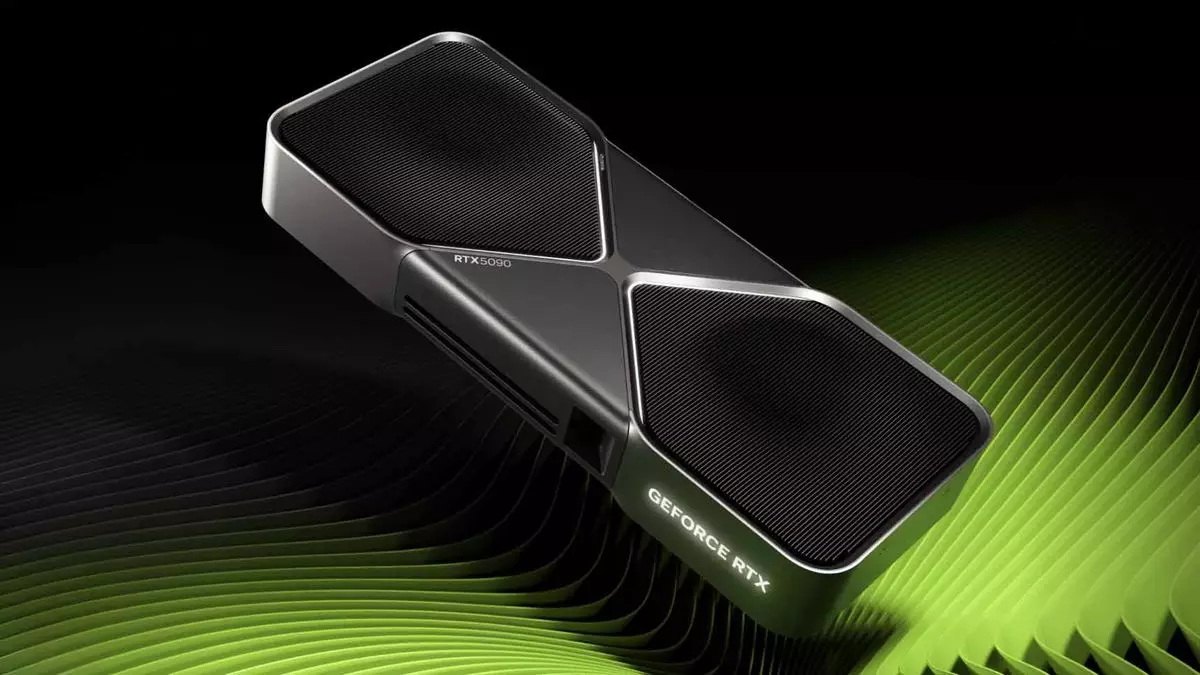The world of computer graphics is in a constant state of flux, driven by technological advancements and fierce competition among major players like Nvidia and AMD. Recently, Nvidia’s latest graphics card, the RTX 5090, has become a focal point of speculation and discussion, largely due to leaks revealing the potential capabilities of its core GPU, the GB202. While the specifications being teased excite graphics enthusiasts, they also raise questions about Nvidia’s strategy and its implications for consumers.
Recent leaks from the Chiphell forum suggest that an engineering sample of the RTX 5090 featured a GB202 GPU boasting an impressive 24,576 CUDA cores. When stacked against the officially confirmed 21,760 cores of the consumer version of the RTX 5090, it marks a notable 13% increase. This increase is not simply a numerical upgrade; it has the potential to significantly enhance performance, especially in demanding gaming and professional applications that require substantial graphical compute power. The speculation is fueled by historical precedence; previous iterations of Nvidia’s GPUs have hinted at robust engineering capabilities that never made it to retail.
The enhancements don’t stop at core counts. The engineering board reportedly comes with 32 Gbps GDDR7 memory, an upgrade over the 28 Gbps GDDR6 memory expected in the retail version. This increases bandwidth from 1,792 GB/s to a staggering 2,048 GB/s, which is crucial for ensuring enough data is available to the processing cores. These specifications lead to an ambitious thought: Could this variant of the 5090 redefine performance metrics for PC gaming and graphic design?
Despite these promising specifications, Nvidia has a track record of holding back on its full potential in retail versions of its GPUs. The RTX 4090, for instance, features 18,432 cores marking a 13% difference from its full potential. This practice raises eyebrows—why would Nvidia not release the most potent version of their GPUs when competition is scarce? With AMD’s recent RDNA 4 GPUs targeting different segments of the market, it seems Nvidia is under minimal pressure to hit performance out of the park, creating an expectation that could lead to disappointment.
Critics argue that Nvidia is taking a softer approach, playing to a market that may not require the cutting-edge power offered by the highest-end variants. This leads us to ponder whether the leaks and subsequent discussions about a fully unlocked RTX 5090 represent Nvidia’s opportunity to correct course. The perception is that full access to the GB202 would satiate consumer demands for exceptional performance, particularly following the wave of mediocrity perceived in recent releases.
If the engineering specs hold any weight, Nvidia could have a compelling PR opportunity on its hands. Introducing a fully unlocked RTX 5090 Ti or a Titan card with the full power of the GB202 could serve as a resounding answer to consumer skepticism. Such a move would not only bolster their product lineup but also affirm Nvidia’s position as the premier graphics card manufacturer in a market filled with ambivalence.
Despite the potential cost, a Titan or Ti version could transform the narrative surrounding the RTX 5090, pivoting from disappointment to excitement. As gaming graphics become increasingly demanding, a GPU capable of handling the latest technology could be welcomed with open arms. Consumers are not just looking for minor upgrades but are anticipating substantial leaps in performance abilities—something that a fully realized version of the RTX 5090 could provide.
The landscape of GPU releases is complex, shaped by technological capabilities, market competition, and consumer expectations. While the leaks regarding the RTX 5090 hint at possibilities that could elevate this GPU to new heights, the history of Nvidia’s decision-making raises questions about whether consumers will ever fully see these technologies realized in retail products.
Ultimately, the anticipation surrounding the RTX 5090’s rumored specifications underscores a broader narrative about the need for manufacturers to heed the desires of their audience while balancing cost, innovation, and competition. Nvidia’s challenge is not only to deliver outstanding graphics performance but to support their product offerings with advancements that meet or exceed consumer expectations. The gaming community is watching, and with aspirations for high performance, they hope Nvidia is ready to answer with more than just minor iterations.

